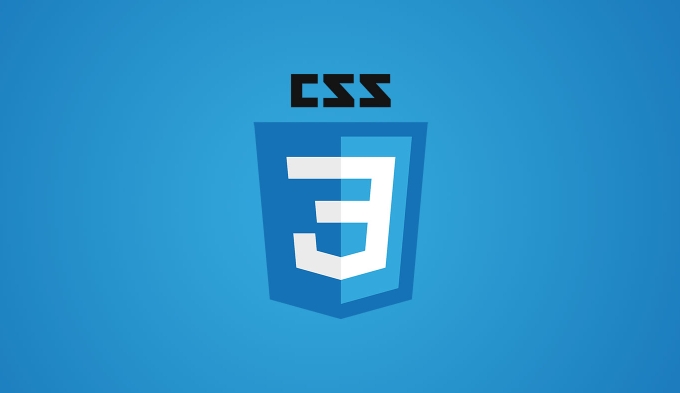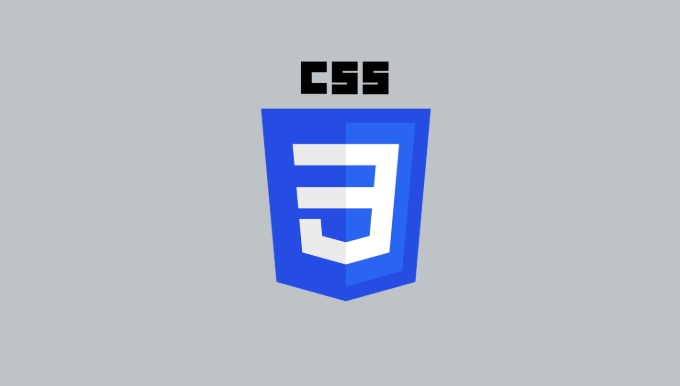Demystifying CSS Units: px, em, rem, vw, vh comparisons
The choice of CSS units depends on design requirements and responsive requirements. 1. px is used for fixed size, suitable for precise control but lack of elasticity; 2. em is a relative unit, which is easily caused by the influence of the parent element, while rem is more stable based on the root element and is suitable for global scaling; 3. vw/vh is based on the viewport size, suitable for responsive design, but attention should be paid to the performance under extreme screens; 4. When choosing, it should be determined based on whether responsive adjustments, element hierarchy relationships and viewport dependence. Reasonable use can improve layout flexibility and maintenance.

In web design, choosing the right CSS unit is crucial to layout and responsive design. Although px, em, rem, vw, and vh are common units, their usage scenarios and behaviors are very different.

1. px: a representative of fixed size
px (pixel) is the most basic and intuitive unit, which represents a point on the screen. Using px ensures that elements maintain consistent display on different devices, suitable for designs that require precise control. However, the disadvantage of px is its fixedness and cannot be adjusted according to the user's settings or viewport size. For example, after setting the font size to font-size: 16px; the text size will not change regardless of whether the user adjusts the browser's zoom. This "crazy" feature may affect the user experience in some cases, especially on mobile.

2. em and rem: flexibility of relative units
em is a relative unit whose value is relative to the font size of the current element. If the font size of the parent element changes, the em value of the child element will also change. This can lead to cascading problems, such as in a nested structure, multiple levels of em calculations can make styles unpredictable. Therefore, special attention should be paid to the context when using em.
In contrast, rem (root em) is more stable. It is calculated based on the font size of the HTML root element and is usually 16px by default. This means that no matter how deep the element is nested, as long as the font size of the root element remains unchanged, the performance of rem is consistent. rem is particularly suitable for unified control of global font size, such as dynamically adjusting the font size of the root element through JavaScript to achieve the overall page scaling effect.

3. vw and vh: Responsive Advantages of Viewport Units
vw (viewport width unit) and vh (viewport height unit) are units based on the browser viewport size. 1vw is equal to 1% of the viewport width, and 1vh is equal to 1% of the viewport height. These two units are great for creating responsive designs as they automatically adjust as the screen size changes. For example, setting the height of a full-screen background image to height: 100vh; ensures that it always occupies the entire screen height without being affected by other elements.
However, vw and vh also have some things to note:
- On mobile devices, the address bar of some browsers may dynamically affect viewport height, resulting in unstable vh behavior.
- When using vw to set the font size, there may be problems with too large or too small fonts, especially on ultra-wide screens.
4. How to choose the right unit?
The key to choosing a CSS unit is to understand the design requirements and the characteristics of the target equipment:
- If you are pursuing absolute precise control without responsive adjustments, px is a reliable choice.
- Rem is more recommended than em for text or components that need to be scaled because it avoids the complexity of cascade.
- vw and vh are ideal when you need elements to automatically adjust with viewport changes, but be careful to handle performance in extreme cases.
- Certain modern units such as ch (character width), ex (x letter height), etc. also have specific uses, but are used less frequently in daily development.
Basically, this is all. Using these units reasonably can make your layout more flexible and easier to maintain.
The above is the detailed content of Demystifying CSS Units: px, em, rem, vw, vh comparisons. For more information, please follow other related articles on the PHP Chinese website!

Hot AI Tools

Undress AI Tool
Undress images for free

Undresser.AI Undress
AI-powered app for creating realistic nude photos

AI Clothes Remover
Online AI tool for removing clothes from photos.

Clothoff.io
AI clothes remover

Video Face Swap
Swap faces in any video effortlessly with our completely free AI face swap tool!

Hot Article

Hot Tools

Notepad++7.3.1
Easy-to-use and free code editor

SublimeText3 Chinese version
Chinese version, very easy to use

Zend Studio 13.0.1
Powerful PHP integrated development environment

Dreamweaver CS6
Visual web development tools

SublimeText3 Mac version
God-level code editing software (SublimeText3)
 What is the difference between display: inline, display: block, and display: inline-block?
Jul 11, 2025 am 03:25 AM
What is the difference between display: inline, display: block, and display: inline-block?
Jul 11, 2025 am 03:25 AM
Themaindifferencesbetweendisplay:inline,block,andinline-blockinHTML/CSSarelayoutbehavior,spaceusage,andstylingcontrol.1.Inlineelementsflowwithtext,don’tstartonnewlines,ignorewidth/height,andonlyapplyhorizontalpadding/margins—idealforinlinetextstyling
 Styling visited links differently with CSS
Jul 11, 2025 am 03:26 AM
Styling visited links differently with CSS
Jul 11, 2025 am 03:26 AM
Setting the style of links you have visited can improve the user experience, especially in content-intensive websites to help users navigate better. 1. Use CSS's: visited pseudo-class to define the style of the visited link, such as color changes; 2. Note that the browser only allows modification of some attributes due to privacy restrictions; 3. The color selection should be coordinated with the overall style to avoid abruptness; 4. The mobile terminal may not display this effect, and it is recommended to combine it with other visual prompts such as icon auxiliary logos.
 Creating custom shapes with css clip-path
Jul 09, 2025 am 01:29 AM
Creating custom shapes with css clip-path
Jul 09, 2025 am 01:29 AM
Use the clip-path attribute of CSS to crop elements into custom shapes, such as triangles, circular notches, polygons, etc., without relying on pictures or SVGs. Its advantages include: 1. Supports a variety of basic shapes such as circle, ellipse, polygon, etc.; 2. Responsive adjustment and adaptable to mobile terminals; 3. Easy to animation, and can be combined with hover or JavaScript to achieve dynamic effects; 4. It does not affect the layout flow, and only crops the display area. Common usages are such as circular clip-path:circle (50pxatcenter) and triangle clip-path:polygon (50%0%, 100 0%, 0 0%). Notice
 How to create responsive images using CSS?
Jul 15, 2025 am 01:10 AM
How to create responsive images using CSS?
Jul 15, 2025 am 01:10 AM
To create responsive images using CSS, it can be mainly achieved through the following methods: 1. Use max-width:100% and height:auto to allow the image to adapt to the container width while maintaining the proportion; 2. Use HTML's srcset and sizes attributes to intelligently load the image sources adapted to different screens; 3. Use object-fit and object-position to control image cropping and focus display. Together, these methods ensure that the images are presented clearly and beautifully on different devices.
 What are common CSS browser inconsistencies?
Jul 26, 2025 am 07:04 AM
What are common CSS browser inconsistencies?
Jul 26, 2025 am 07:04 AM
Different browsers have differences in CSS parsing, resulting in inconsistent display effects, mainly including the default style difference, box model calculation method, Flexbox and Grid layout support level, and inconsistent behavior of certain CSS attributes. 1. The default style processing is inconsistent. The solution is to use CSSReset or Normalize.css to unify the initial style; 2. The box model calculation method of the old version of IE is different. It is recommended to use box-sizing:border-box in a unified manner; 3. Flexbox and Grid perform differently in edge cases or in old versions. More tests and use Autoprefixer; 4. Some CSS attribute behaviors are inconsistent. CanIuse must be consulted and downgraded.
 Describe the `opacity` property
Jul 15, 2025 am 01:23 AM
Describe the `opacity` property
Jul 15, 2025 am 01:23 AM
opacity is an attribute in CSS that controls the overall transparency of an element, with values ranging from 0 (fully transparent) to 1 (fully opaque). 1. It is often used for the image hover fade effect, and enhances the interactive experience by setting the opacity transition; 2. Making a background mask layer to improve text readability; 3. Visual feedback of control buttons or icons in the disabled state. Note that it affects all child elements, unlike rgba, which only affects the specified color part. Smooth animation can be achieved with transition, but frequent use may affect performance. It is recommended to use it in combination with will-change or transform. Rational application of opacity can enhance page hierarchy and interactivity, but it should avoid interfering with users.
 What is the accent-color property?
Jul 26, 2025 am 09:25 AM
What is the accent-color property?
Jul 26, 2025 am 09:25 AM
accent-color is an attribute used in CSS to customize the highlight colors of form elements such as checkboxes, radio buttons and sliders; 1. It directly changes the default color of the selected state of the form control, such as changing the blue check mark of the checkbox to red; 2. Supported elements include input boxes of type="checkbox", type="radio" and type="range"; 3. Using accent-color can avoid complex custom styles and extra DOM structures, and maintain native accessibility; 4. It is generally supported by modern browsers, and old browsers need to be downgraded; 5. Set accent-col
 Describe the `:has()` pseudo-class (Parent selector)
Jul 15, 2025 am 12:32 AM
Describe the `:has()` pseudo-class (Parent selector)
Jul 15, 2025 am 12:32 AM
The:has()pseudo-classinCSSallowstargetingaparentelementbasedonitschildelements.Itworksbyusingthesyntaxparent:has(child-selector)toapplystylesconditionally.Forexample,div:has(img)appliesstylestoadivcontaininganimage.Multipleselectorscanbeusedwithcomma







